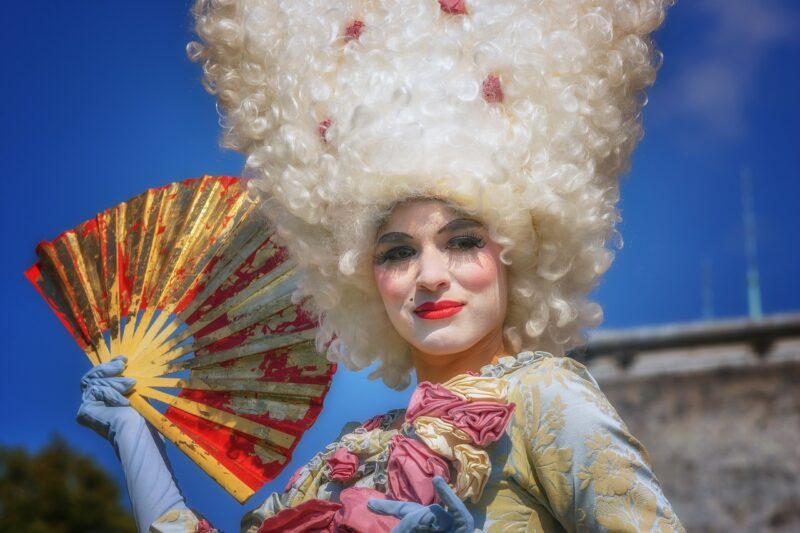
Wigs, with their elaborate styles and historical significance, once dominated the courtrooms and social settings of Europe. While today they might be seen as peculiar accessories, particularly in legal contexts like Britain, the history of wigs as symbols of status reveals much about social hierarchy and fashion in Europe from the 16th to the 18th centuries.
1. The Origins of Wigs in Europe
The use of wigs in Europe can be traced back to ancient times, but their widespread popularity surged during the Renaissance. This period marked a revival of interest in classical antiquity, with a particular fascination for the aesthetics of ancient Rome and Greece. Initially, wigs were utilized to cover baldness and subsequently adopted as a must-have fashion item by the aristocracy.
In England, the trend was bolstered when King Charles II returned from exile in France in 1660. Suffering from hair loss and inspired by the fashionable French court, he introduced wigs to the English nobility. Wigs soon became synonymous with wealth, power, and prestige.
2. The Social Significance of Wigs
During the 17th and 18th centuries, wigs played an essential role in social status and societal behavior. Various factors contributed to their significance:
- Fashion Statement: Wigs became an integral part of a fashionable wardrobe, serving as a means of self-expression. Elaborate wigs, often powdered white, were indicators of one’s adherence to court fashion and the latest trends.
- Symbol of Authority: In legal settings, judges and barristers adorned themselves with wigs, reinforcing the symbolism of justice and legal authority. The combination of a black robe and white wig created an imposing figure, embodying the law’s seriousness and formality.
- Social Hierarchy: The style and quality of a wig often indicated a person’s rank. Courtly wigs with curls and adornments were exclusive to the upper classes, while simpler styles were worn by less affluent individuals. This connection reinforced the rigid social structures of the time.
Wigs not only conveyed personal style, but they also depicted a person’s status within society’s complex hierarchy.
3. The Evolution of Wigs: From Extravagance to Practicality
As the 18th century progressed, the style of wigs evolved. Initially characterized by their size and elaborate curls, wigs began to take on more practical forms:
- Lesser Elaborate Styles: By the late 1700s, the trend shifted toward more understated wigs, reflecting a changing societal attitude towards excess and extravagance. Regional styles also influenced these changes, leading to diverse variations across different European courts.
- Wigs in the French Revolution: The revolutionary sentiments in France led to a backlash against the aristocracy, and wigs fell out of favor among the general public. Revolutionary leaders often sought to symbolize their break from tradition and opulence by adopting simpler hairstyles.
The use of wigs started to diminish as society became more egalitarian, and the practicality of natural hair became more aligned with the values of the times.
4. Wigs in the Modern Context: A Remnant of Historical Elitism
Today, wigs are primarily used in various contexts, from fashion to performance art. The historical connotation of wigs as symbols of status is less pronounced, although some professions, like law, still uphold this tradition. The legal profession in the UK continues to use wigs as vestiges of ancient authority and respect.
Moreover, wigs have regained popularity in different ways. From fashion runways to theater productions, they will likely continue to symbolize creativity and transformation rather than status.
5. Conclusion: The Legacy of Wigs in European Courts
The historical significance of wigs in European courts reflects broader themes in societal hierarchy, fashion, and authority. Where once the wig may have denoted prestige and social standing, today it serves as a fascinating reminder of how fashion can encapsulate larger cultural narratives.
As we look back on the era when wigs were powerful symbols of status, we see a period that highlights the intertwining of fashion and social dynamics, showcasing how appearances can reflect deeper societal structures and attitudes. The evolution of wigs from extravagant symbols of aristocracy to commonplace fashion items mirrors shifting societal norms, making the journey of the wig an enduring element of our historical narrative.
From the opulent courts of Europe to contemporary society, the legacy of wigs continues to be an intriguing chapter in the story of fashion and status.






